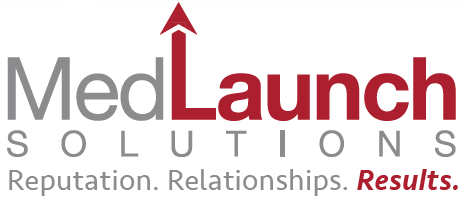Competition in the medical practice and facility industries is more intense and challenging than ever before, evolving on a daily basis. Leveraging current referral relationships and cultivating new ones through the utilization of a Physician Liaison could make the difference in whether your practice or facility succeeds or fails.
THE BIG QUESTION – How do you determine the return on investment for relationship marketing for referrals/Physician Liaison efforts? The answer is, it’s often rather hard to determine. These types of efforts have the goal of increasing referrals by building relationships and establishing practice brand awareness that will continue to produce results years down the road. Building the trust of referring medical providers takes time…time for them to evaluate their patients’ results and satisfaction, as well as time for them to evaluate the referral process, the communication back from physicians they’ve referred their patients to and interactions with their staff.
Having said that, there are certain things you must do in order to evaluate the success of your referral marketing campaign.
1. Identify and prioritize your target list.
Who are the physicians and practices that you would like to see an increase in referrals from? And what is the potential opportunity for referrals? Rank them in order of importance.
2. Determine your baseline referral numbers.
This is harder for some than others. All organization utilize different practice and patient management platforms. Most EMR/EHR platforms have a field to capture the referring provider’s name. If this is not possible for you, create a spreadsheet. It is imperative to know where you are to determine where you want to be.
3. Determine how you will track new referrals (both for individual providers and the practice as a whole, if that applies).
Once you’ve done this, the best way to determine if your marketing plan is paying off, is whether you have a reasonable patient acquisition cost. For example, if you spent $3,000 on marketing in a month and acquire 50 new patients, then your patient acquisition cost is $60 per patient. If a new patient is worth $100 in profit, then the referral marketing campaign in this example is highly profitable. Keep in mind that worth of new patient can be determined by either calculating the average profit on the first visit OR the lifetime worth of the patient (more relevant in my opinion). Also keep in mind that there’s nothing worse than spending marketing dollars to acquire a new patient only to lose the patient to poor service, long wait times or a rude staff member. Make sure your practice is ready to take on the new patients that you are spending marketing dollars to recruit.
A Physician Liaison is the face of your clinic and your providers to the referral audience. Their success is your success and comes from building strong relationships with the referral decision makers in the practices that refer to you. Beyond the doctors themselves, oftentimes it’s their nurses, front office staff, midlevel providers, medical assistants and sometimes even business owners, managers and employees. Their goal is to investigate, educate and engage your referral audience. The result? Brand awareness for you and your practice is built and a robust referral network is cultivated and/or maintained. More referrals over time = more patients = return on your marketing investment in the long term.
Practices and facilities that are not leveraging strategic referral relationships will find themselves lagging behind those that have already embraced this very important aspect of ensuring a robust referral network and a packed patient pipeline. Revisit your game plan and develop a business model integrating relationship-building programs for referrals to keep your practice or facility thriving. The model should include baseline referral numbers and a way to track new referrals and of course…a fantastic and passionate Physician Liaison!
And remember – growing your practice takes time! Consider the importance of long-term marketing strategies and remember that without them, short-term success will be short-lived. Positive relationships with your referring providers are critical to your long term success!


